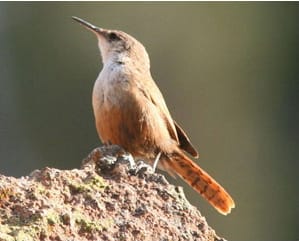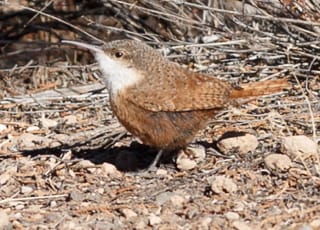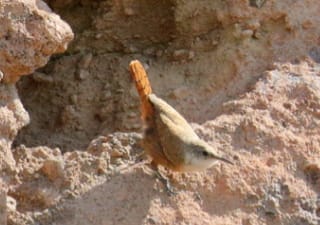Initially this guide displays common birds of all types that are flying right now in our area. Use the selectors below to view rare birds, view birds flying any time, restrict the output to a certain shape of bird, or search by name.
New Mexico is on the western edge of the Central Flyway which is one of the major migration pathways between north and south for birds traveling between breeding and wintering grounds along the Rocky Mountains. This has resulted in the state having an incredible diversity of birds with over 550 different species reported. A little more than half of this number are sighted annually on the Pajarito Plateau. Some of these birds are full-time residents, some migrate here for a few weeks or months, and other are only seen briefly as they pass through the region.
This guide features many of the birds known to frequent Los Alamos county by when they are likely to be seen in the area. You can get additional information on local birds by joining PEEC Birders or going to the eBird website. eBird also includes lists of rare bird sightings and birding hot spots.
Bird References
Birdweb
Cornell Lab of Ornithology
eBird
eNature
Institute for Bird Populations
National Audubon Society
New Mexico Ornithology Society
What Bird
xeno-canto
Subject Area Experts (all guides)
Steve Cary (butterflies)
Beth Cortright (insects)
Terry Foxx (invasive plants)
Leslie Hansen (mammals)
Richard Hansen (fish, mammals)
Dorothy Hoard (butterflies, trees)
Chick Keller (flowers, herbarium)
Shari Kelley (geology)
Kirt Kempter (geology)
Garth Tietjen (reptiles)
David Yeamans (birds)
Web Development and Content Management
Pat Bacha
Jennifer Macke
Graham Mark
Akkana Peck
Contact
Please contact us for local nature questions and sightings. We welcome comments, corrections, and additions to our guides.
For more information about local nature, please visit our Nature Blog or subscribe to PEEC This Week.
Make Selection
 Photo: adult by Hari Viswanathan  Photo: adult by Stephen Shankland  Photo: adult by Bob Walker |  Canyon Wren, Dotted WrenCANW (Catherpes mexicanus)Family: Troglodytidae (Wrens) Size: 5.5 - 6 in (14 - 15 cm) Flies: Jan 01 - Dec 31 Morphology: both sexes have brown body, white throat, bright rusty, barred tail, and long, thin bill curved downward; immatures are similar to adult but with less markings Status: native; locally common Food source: variety of insects including termites, ants, beetles, etc. and some spiders Habitat: rocky canyons, cliffs, old stone buildings Typical location: Falls Trail, White Rock Canyon Canyon Wrens are hyperactive, most often seen scurrying around the rocks. Their long bills and flat heads enable them to reach deep into crevices to find food. In addition to foraging under rocks and in crevices, these birds will explore areas with very dense undergrowth for prey. Canyon Wrens do not appear to drink water but get what they need from insects. Males defend the nesting area by singing. Nests, usually in a hole or rock crevice, are filled with coarse items topped with a cup made of softer materials. Young leave the nest at about 15 days of age, but will remain with their parens for several more weeks. Info Photos Distribution Frequency |
